
For centuries people were trying to preserve the food, to last longer. Putting fresh fruits and vegetables in salty brine, or in solution of vinegar and water, or keep them in an airtight container, to allow them fermented naturally, was one of the most popular things to do.
I grow up in Eastern Europe, as you probably remember, so in my home, every summer, there was a big productions if all kind of pickles, so we have enough to last for the winter. I know, it was a different time, and trust me, completely different reality, nevertheless till this day i love the taste of it. You may say that is it brings so many memories.
The pickling process preserves fresh produce. And to tell you the truth, you can pickle almost everything. Homemade sauerkraut has more vitamin C, than an orange. And during cold seasons, it an often staple in so many homes. When you think about picking, you probably will have an image of cabbage, cucumbers or maybe beets, but you can pickle almost anything. Pickled celery, peppers, even tomatoes or apples. And of course, mixed vegetable pickles salads, one of my favorites). It is worth preparing at least small portions of it every year. Why?
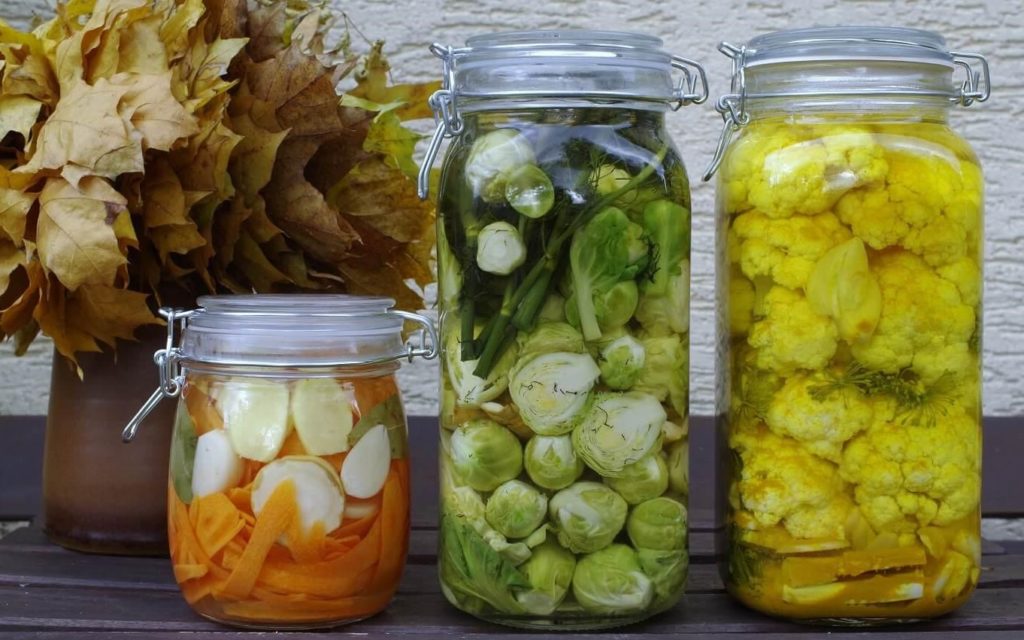
Homemade pickles in jars are also a godsend of summer, preserved for the winter. When fruit and vegetables are expensive and of lower quality in winter, the pickled treasure will be precisely right. They can be a valuable source of vitamins and minerals when we need them most. It is also worth knowing that pickled vegetables have fewer calories than raw vegetables.
I am convinced that you know, that pickling cabbage or cucumbers makes them more valuable in terms of nutrients. During fermentation, bacteria multiply, which play a particularly important role in our digestive system.
Zucchini
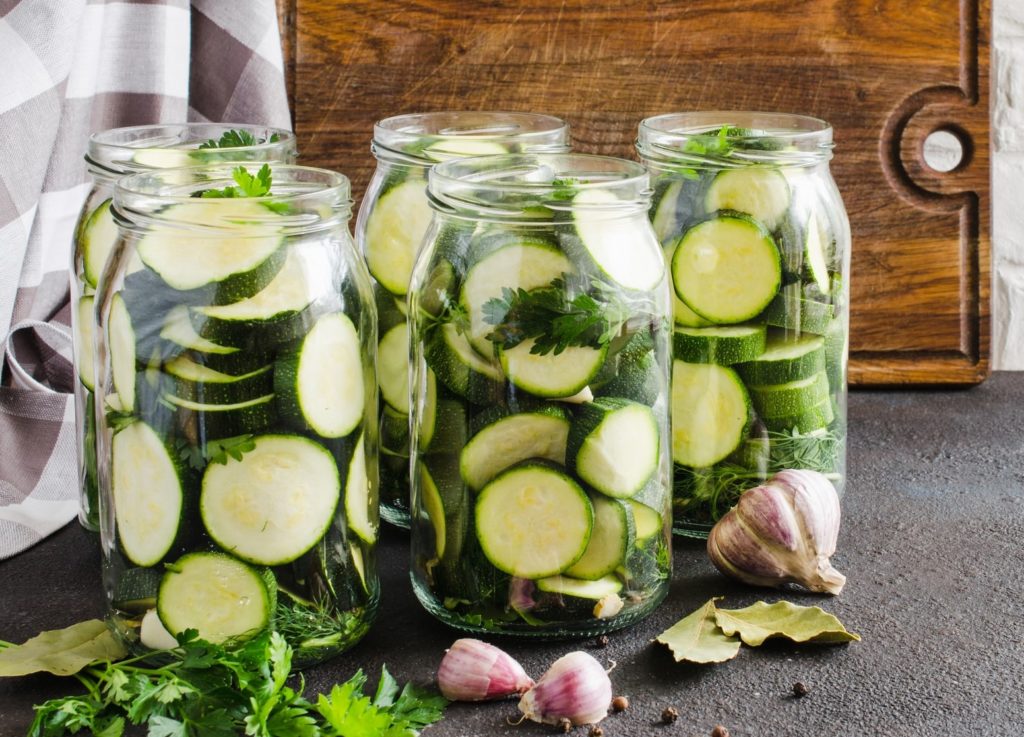
The fact that the pickled zucchini is delicious should not surprise anyone. After all, it is a vegetable from the pumpkin family. However, in pickling it has a slightly different taste – it is a little bit softer and sweeter. The way of making the pickling liquid, is the same as for the cucumbers. It will be perfect addition for the winter dinner.
Lemon
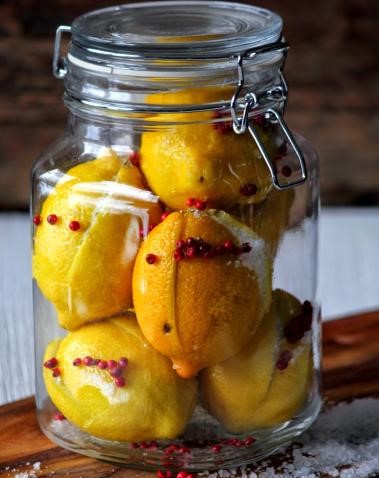
Preserved lemon or pickled lemons are a condiment, commonly used in India and North Africa. Diced, quartered, halved, or whole lemons are pickled in a brine of water, lemon juice, and salt. The pickle ferments at room temperature for weeks or even months. The pulp of the preserved lemon can be used in stews and sauces, but it is the peel (zest and pith together) that is most valued. The flavor is mildly tart but intensely lemony.
Wild mushrooms

The best thing about mushroom season is in full swing? Plenty of wild forest mushrooms! it is worthy capturing their taste for winter. Mushrooms in vinegar is a classic snack and … an appetizer. For preserving, I suggest using small and firm porcini mushrooms, bay boletes, chanterelles, buttermilk, or saffron mushrooms. The bogger ones, you just must cut in the pieces. You can use one type of mushrooms or mixed ones. A vinegar decant is a 4: 1 mixture of water and vinegar plus spices (whole black pepper, onion, garlic, Bay leaf).
Cauliflower
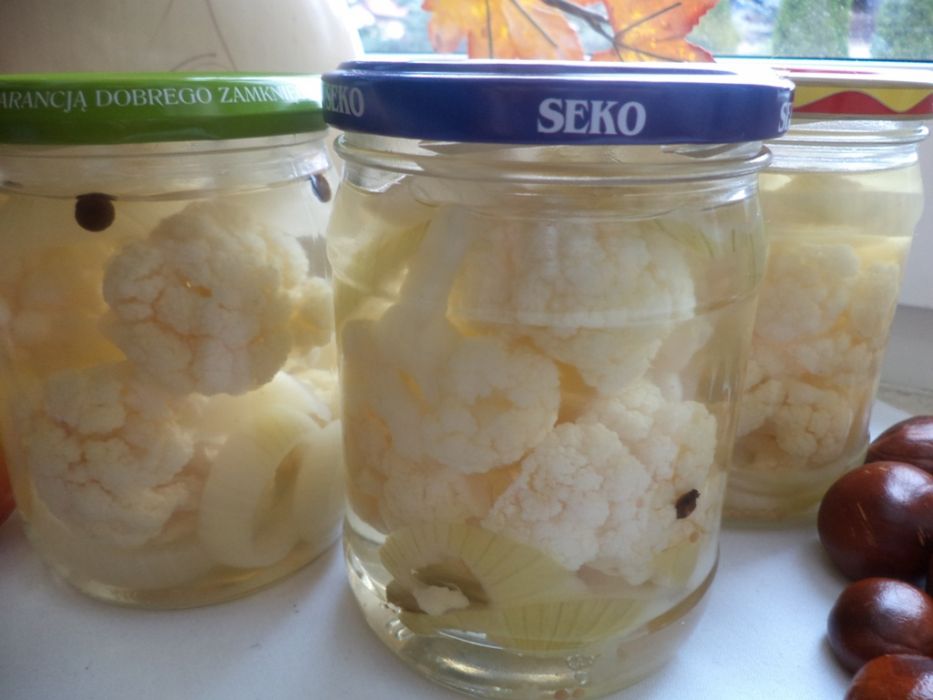
The pickled cauliflower is by far the crunchiest of all the vegetables presented here. It has an extraordinary, yet very distinctive taste. That is why not everyone likes it, but it is worth trying. I love it. You can pickle it with radishes, then it will take on an interesting pink color. It is suitable for preparing various dishes, such as salads, or being the part of antipasto platers.
Carrots

Pickled carrots are rarely prepared by themselves. It is often added to mixed pickle vegetable salad, because of its distinct sweet taste. And because of it, you should try to make it prepared as a separate dish. Sweet, a little tangy flavor and very, very crunchy too. And it goes well with many different oriental dishes, such as Bahn Mi sandwich, fried noodles, or just as a side salad for the meat course.
White mushrooms
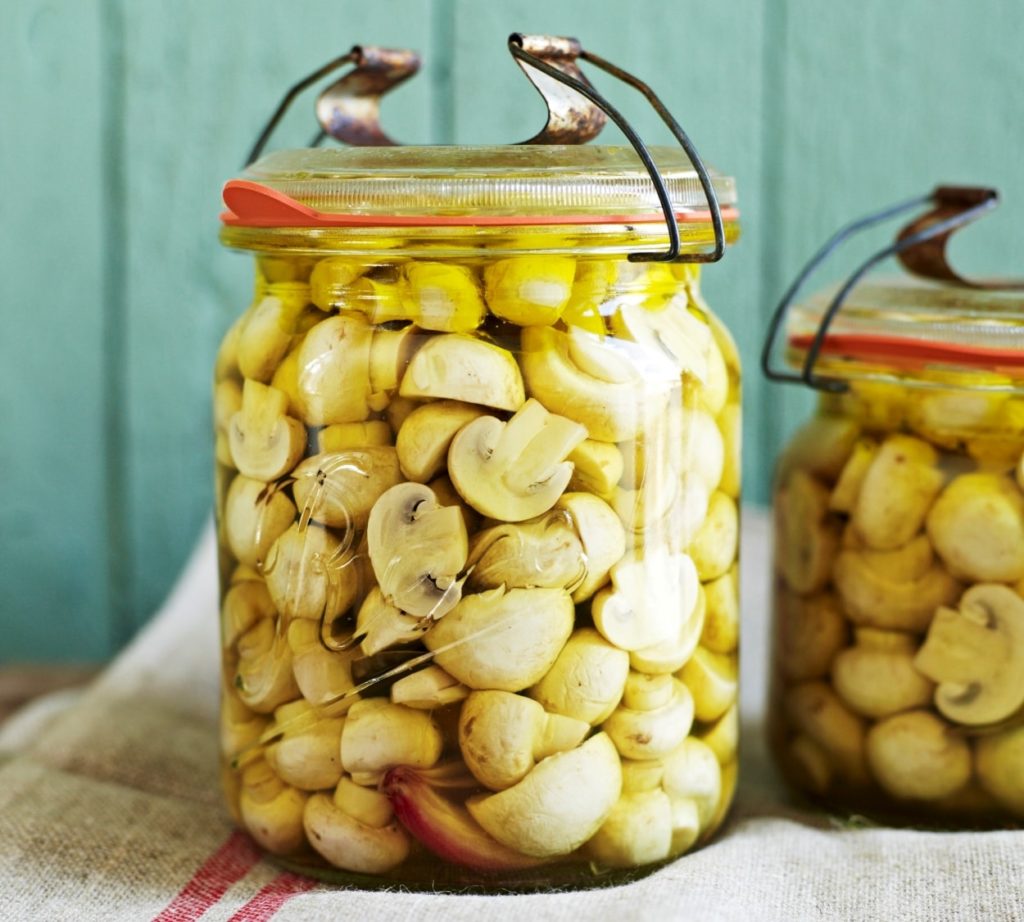
Marinated mushrooms are a classic recipe for delicious preserves that can wait in your home pantry on gray winter days to update a delicious dinner. Pickled mushrooms can be prepared almost all year round. Mainly because the ingredients are easily available and inexpensive. The recipe for pickled mushrooms is easy to prepare and even a beginner cooks can handle menage. Mushroom marinade tastes best made from sweet and sour ingredients. Therefore, sugar and vinegar are added to it. Mushrooms in vinegar in jars gain additional sharpness by using mustard seeds and black pepper.
Peppers
Peppers are usually made in a vinegar pickling juice, and they are delicious. The pickled peppers are tasty and slightly sweet. They are extremally easy to make, but one thing you must remember. Make sure that the pickling liquid is not boiling hot (it needs to be hot, but not too hot, if you know what I mean), because that is will cause the peppers to lose its firmness. Red, orange, and yellow peppers are perfect for pickling. You can also add a little chili peppers to spice up the taste, or you can make a spicy version of pickled peppers. If you like heat, it ill be perfect topping for ant meat dishes, or burgers.
Onions
One of the oldest and most used vegetables. You can use the mini pearl onions and use them for mixed cocktail drinks or as a part of antipasto platters. You can use the larger onion, red or white, and just slice it in halfmoons. Make a pickling liquid: water, vinegar, salt, whole black pepper, and Bay Leaf. The sliced pickled onions are such a delicious addition, to all kinds of meal. Trust me, goes perfect with burgers and as a topping for grilled meats.
Apples
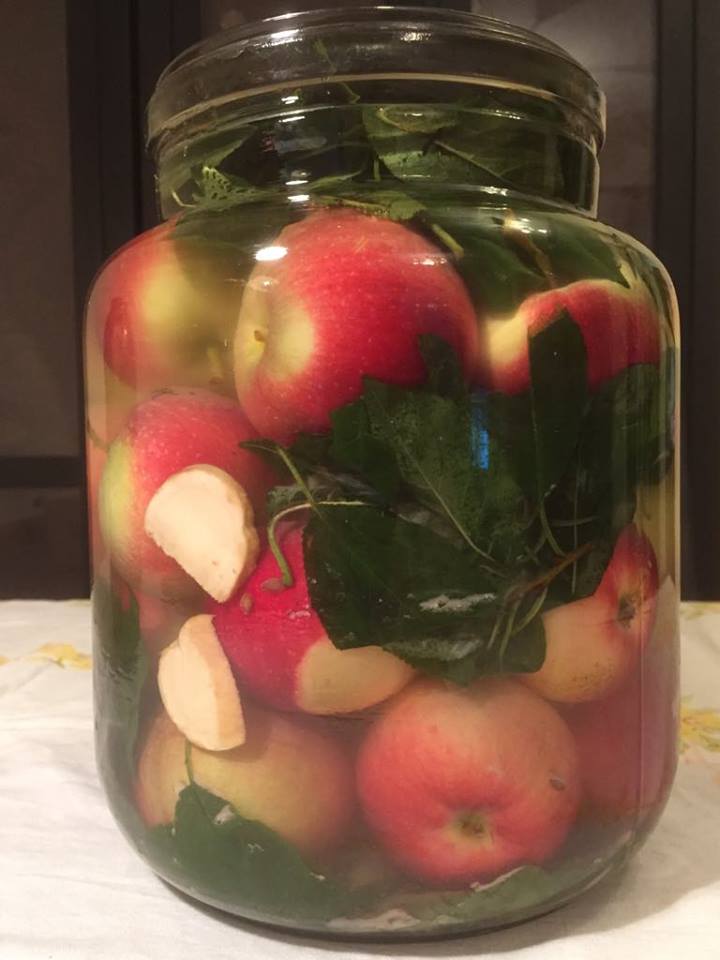
You will probably ask, what to pickle the apples, since you can eat them fresh?? Well, you may be thrilled to know that pickled apples maintain all the beneficial properties of fresh apples, additionally enriching them with the qualities of fermented products. You need small to medium size, tart (preferably) apples, few grape leaves, good, filtered water, honey, and cinnamon sticks. Pickled apples in jars look beautiful and can be a wonderful kitchen decoration. However, it is worth pickling them for their unusual taste. They are slightly acidic, but with a fruity sweetness, which makes them brilliant for many applications.
Cornichons

The king of all picked veggies. Always crunchy, tangy, and vinegary cucumbers. They can be mini ones (perfect for snacking), medium, or even large ones – sliced into coins or whole. Great with sandwiches or used in many appetizers and antipasto platters. Extremally easy to make it at home. It is always fresher, with better ingredients and less processed with chemicals.
Patty pan squash
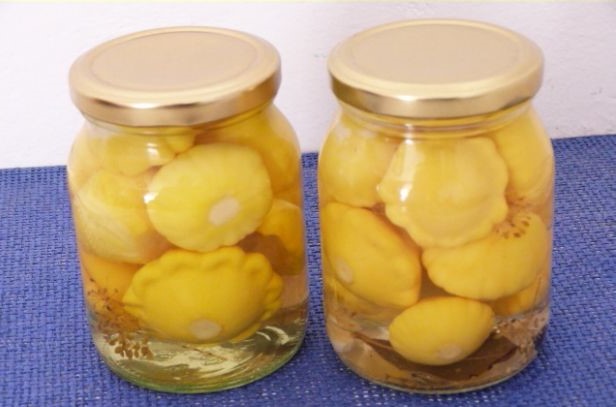
They cutest looking variety of ordinary pumpkin family. Like two small plates put together, with the ruffled edges. I love them. The patty pan squash fruits are extremely easy to digest, have a delicate flavor and are great for diets as they are low in carbohydrates. With the delicate flavor and aroma, they are vegetable with multiple use. It is Very simple to prepare the pickled pattypan squash. You will need glass jars, small and young (preferable) pattypan’s, filtered water, salt, garlic, and fennel leaves.
Sauerkraut
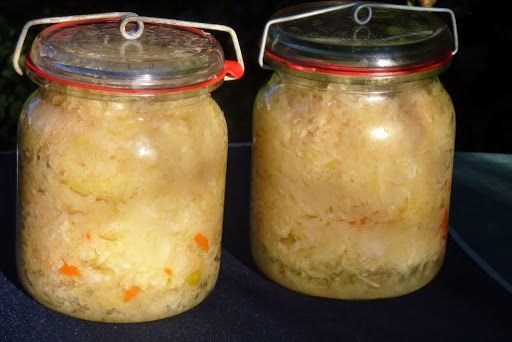
Well, in Europe, next to cornichons, that is the second most popular pickled (sour) thing. Souring cabbage is extremely easy because … the cabbage is fermenting by itself. It is enough to cut it in small strips, or shred it, salt it, rub it to release the juice and put it in a jar. Little work and what is the satisfaction of homemade silage! You can pickle cabbage at any time of the year. Since this vegetable, raw, in heads, can be bought all year round, it can also be processed. For cabbage rolls, cabbage soup or pickle and have a healthy probiotic ingredient, with lots of vitamin C at hand.
Tomatoes
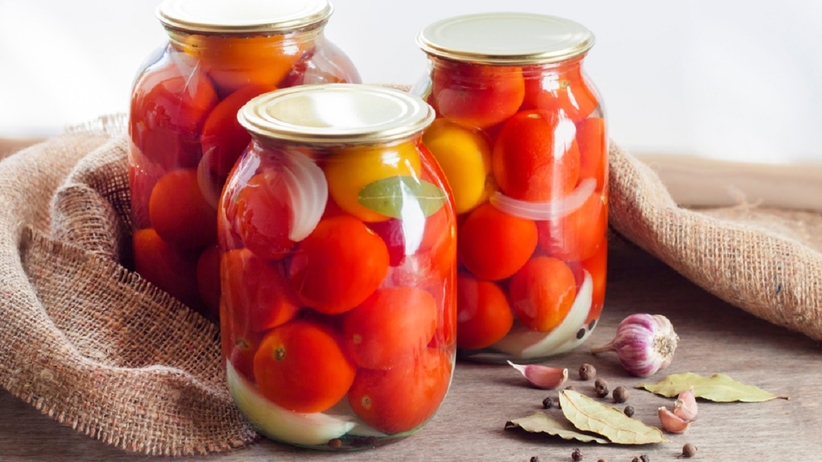
Take a medium or large jar, place thick slice of raw white onion on the bottom, and fill it up with small tomatoes (cherry, plum or small on the vine, will be perfect). Make a pickling liquid. Tomatoes in vinegar have a pleasantly intense flavor, thanks to the addition of onion, pepper, allspice, bay leaf, garlic, dill, and cloves to the water and vinegar mixture. Therefore, a perfect match for meat dishes. Pickled tomatoes can also become an ingredient of vegetable salads, especially in winter, when the fresh vegetables do not taste the same.
Cucumbers in Brine
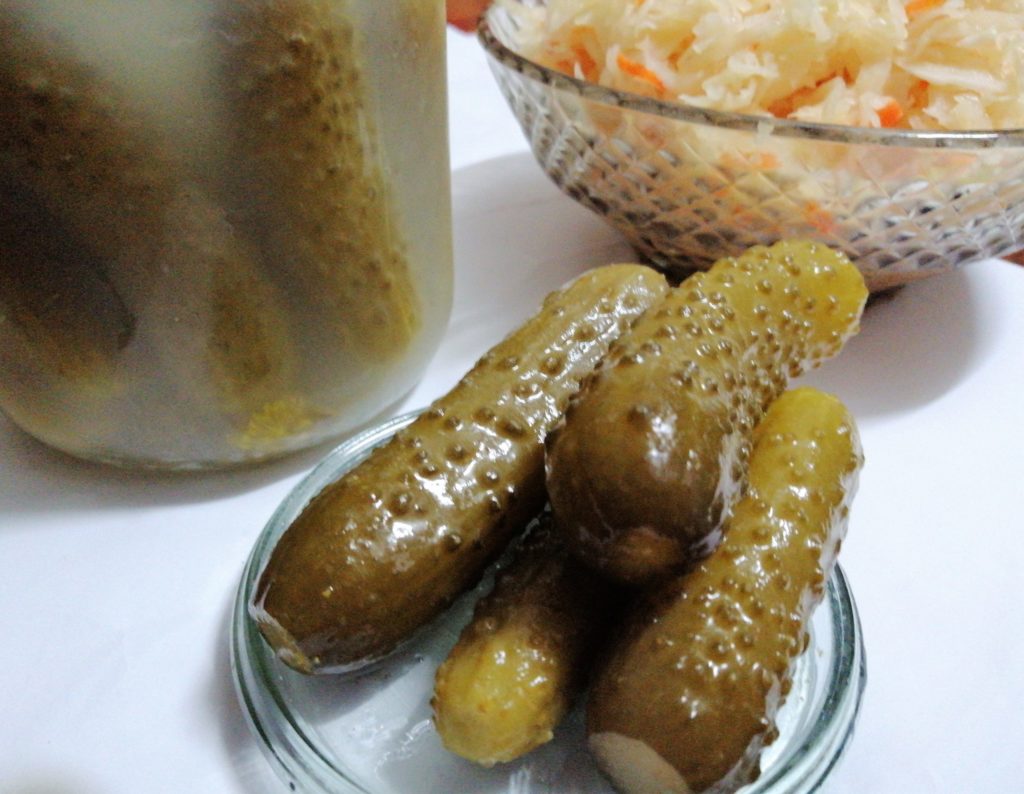
This is a little bit different way of preserving cucumbers. It is extremally popular among many cultural backgrounds. The cucumbers are tightly placed in large jar, with some garlic, horseradish root (small piece is enough) and black pepper. The liquid is a solution of water and salt (no vinegar this time). That is will do the magic trick, resulting in so delicious snack. Still firm, but with so different taste, the cucumbers in brine are perfect for salads, meat dishes and burgers. Or in the simple world, as a snack by itself.
Garlic

There is a lot of people, who do not like the taste of fresh garlic. Marinating it (in vinegar or oil and herbs), is one of the best ways, to preserve its valuable properties, and at the same time enjoy it less harsh taste and smell. Amazingly simple pickling liquid, with water, vinegar, and black pepper. Make sure to choose healthy looking cloves, without black spots or blemishes, from a good source (organically grown). It is perfect for salads, sauces, stews, sandwiches and so much more. It will last for a long time, without the bitter taste.
Radishes
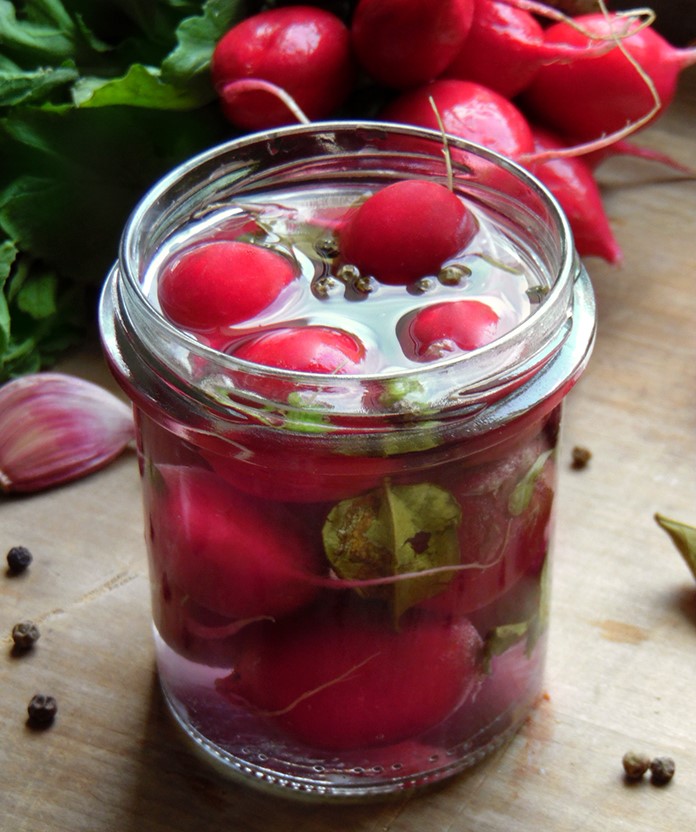
Tasty little white and pink balls. Pickled radishes will always hit the spot. They are an extremely rich source of vitamins and minerals, and the water from their pickling is perfect: sour, salty, pinkish. This is something, that is everyone should try to do at home. Classic water and vinegar-based liquid will preserve their freshness and nutrients. They are perfect as a part of antipasto platters, appetizers, or part of salads, to be serve with cold meats, or sandwiches.
Mix vegetable salad
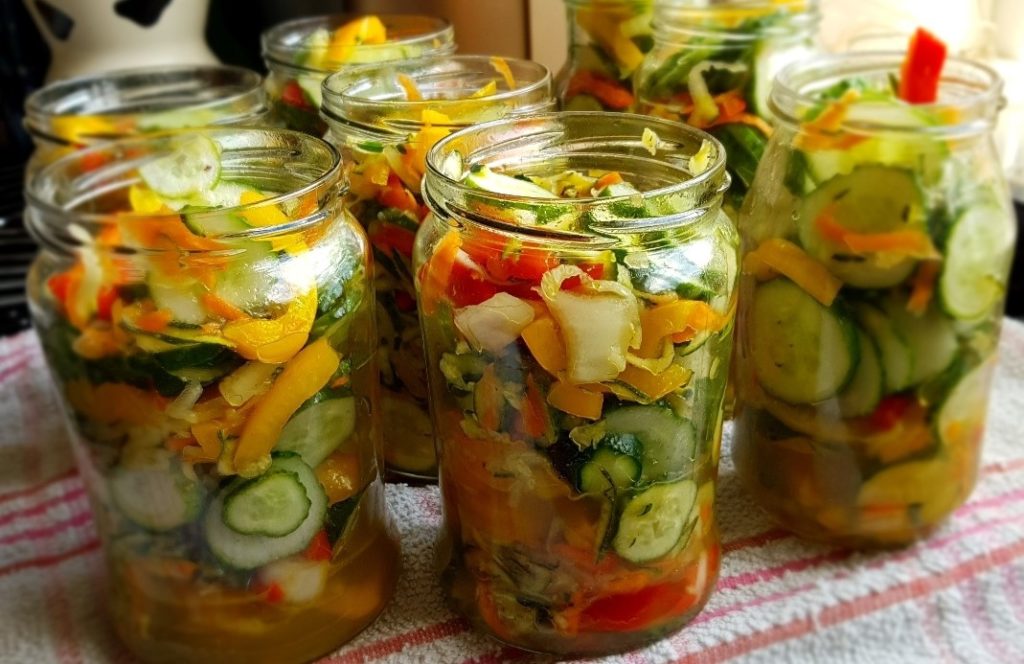
This is immensely versatile category. Well, basically which vegetables you like the most. It is exactly, build your own salad (but for a little later). Shredded cabbage, carrots, onions, cucumbers, zucchini, squash, mushrooms, and everything else in between. Traditional pickling liquid, little salt, black pepper, and Bay leaf. This is a jar of goodness. When its old outside, serve with chicken, to give the dinner an update on flavor, and most of all vitamin boost.
Beets
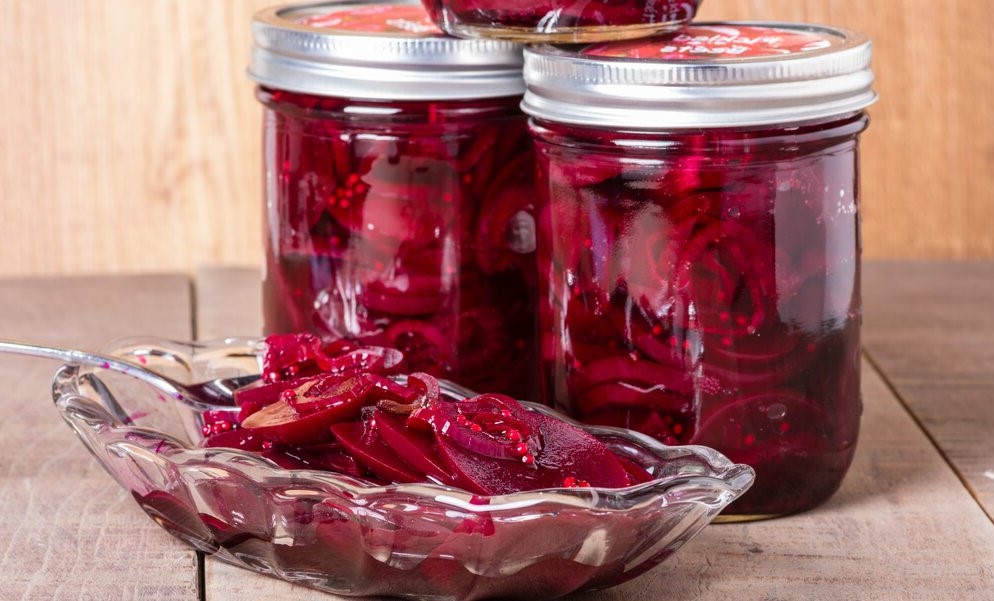
The recipe for beets in vinegar is a great idea for autumn and winter. They are healthy, very accessible, easy, and inexpensive. Believe me on that, very tasty, and they good for your blood It is an excellent proposition for people who like sour side dishes. Use some of the pickled onions, or fresh ones, and you have delicious salad ready (one of my favorites). You can safely store them all year round. You do not have to buy the store preserves, full of sugar and other stuff, you cannot even pronounce. you can prepare your own supplies for several months in one evening.
Plums
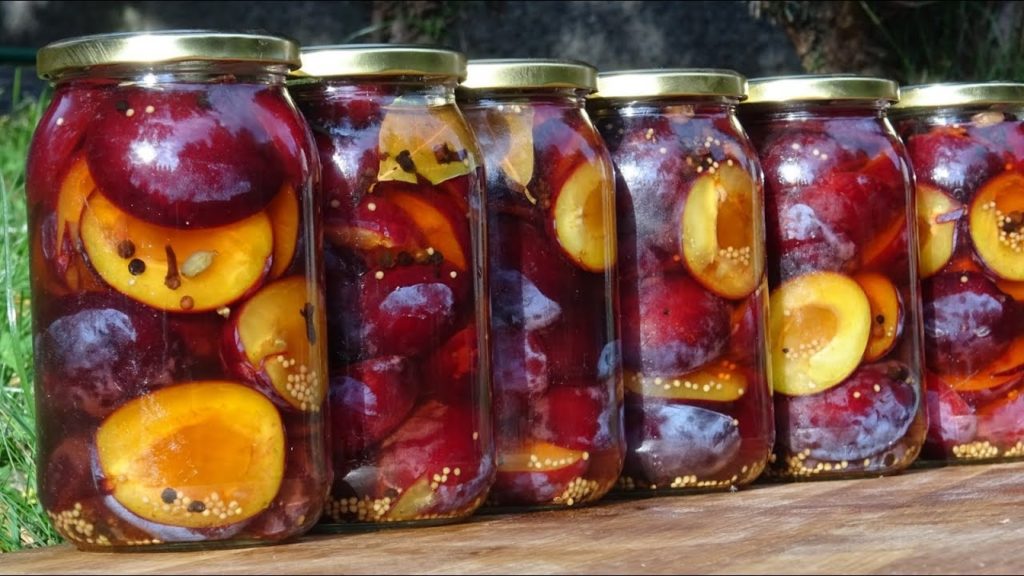
Taste of my childhood. Vinegar plums are perfect as an addition to pates, cold roasts, or vegetable salads. They are amazing just by themselves. They have lost their popularity a bit recently, but they are so delicious when done well, it is worth mentioning. If you do not like pitted plums, test them, but the seeds also add flavor to the fruit. the dark purple are the best ones. Preparing plums in vinegar according to the old recipe requires a bit of patience, but it is worth spending some time on them to enjoy their spicy aromas and honey flavor in winter. The pickling liquid is often enriched with honey, cloves, cinnamon sticks, to break the vinegar taste, and not to feel like a sad plum salad.
*Bonus
Pineapple squash
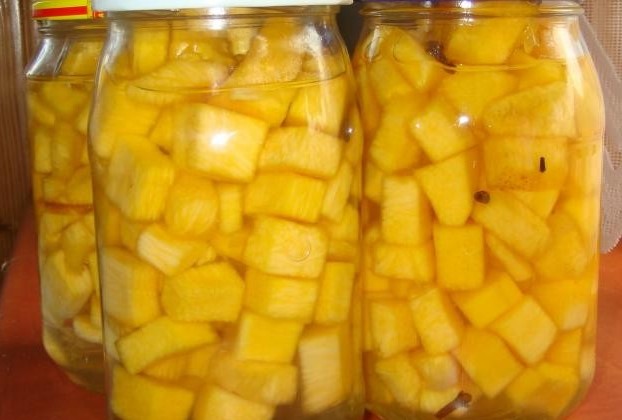
Well, I must tell you it was always hit in my home. And as kids me and my brother, unknowingly were eating a lot mor of vegetable servings thank to this. Sweet, marinated zucchini tastes exactly like canned pineapple. It is sweet and aromatic – it will be a great addition to salads and desserts. You can also nibble it as a snack. The zucchini a ‘la pineapple stole our hearts and taste buds. The marinade, as you can guess, is a little different, nevertheless is a great way to preserve some squash, especially the larger ones (or even zucchini and pumpkins). All you need is: water, turmeric, vanilla sugar (yes, the one for baking), few cloves, sugar, and few drops of lemon juice. That is all. Trust me, the result will surprise you!
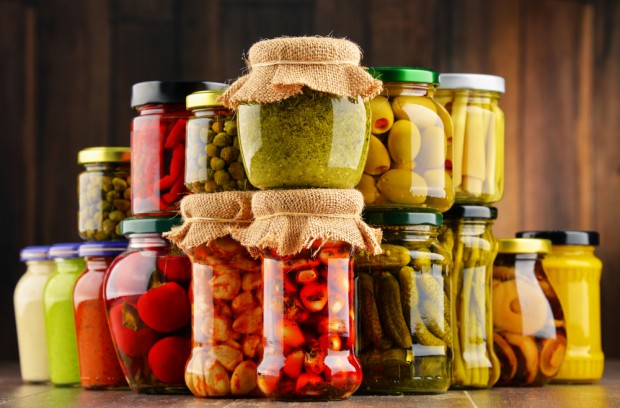

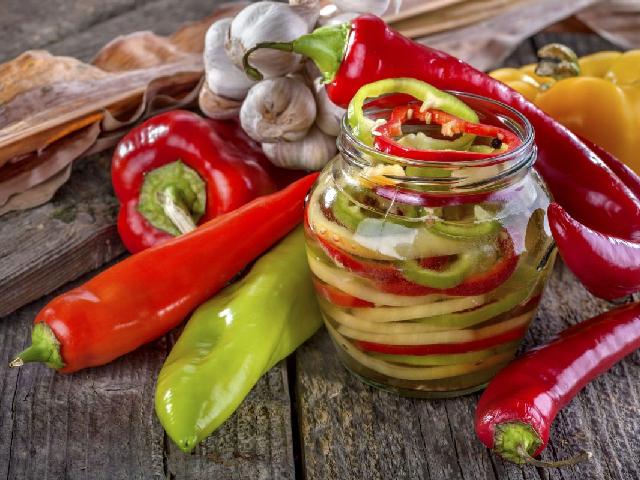
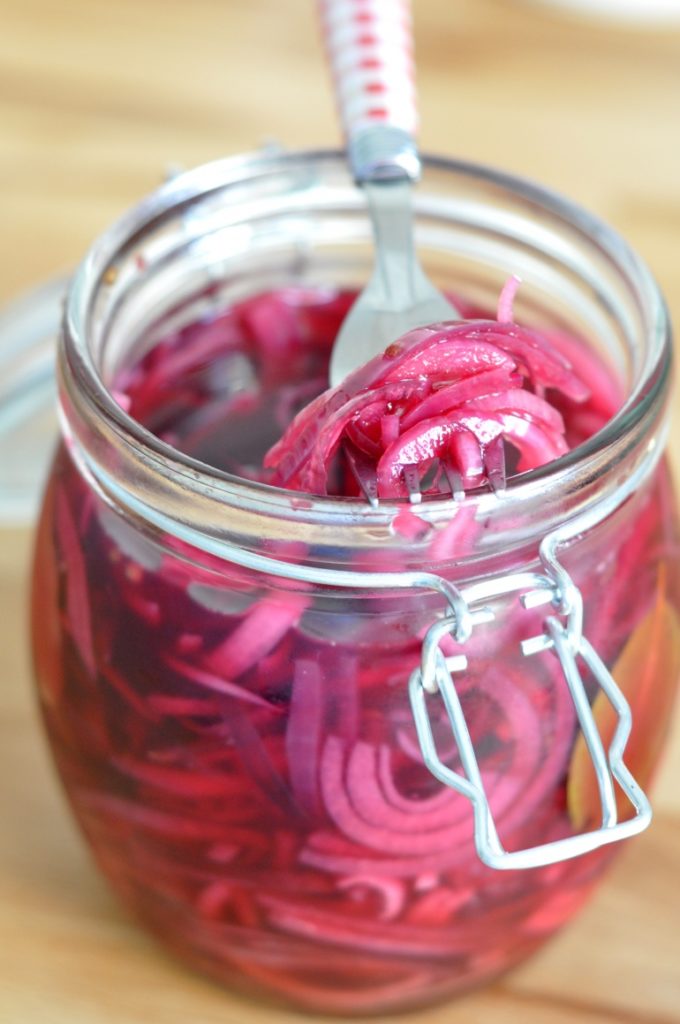
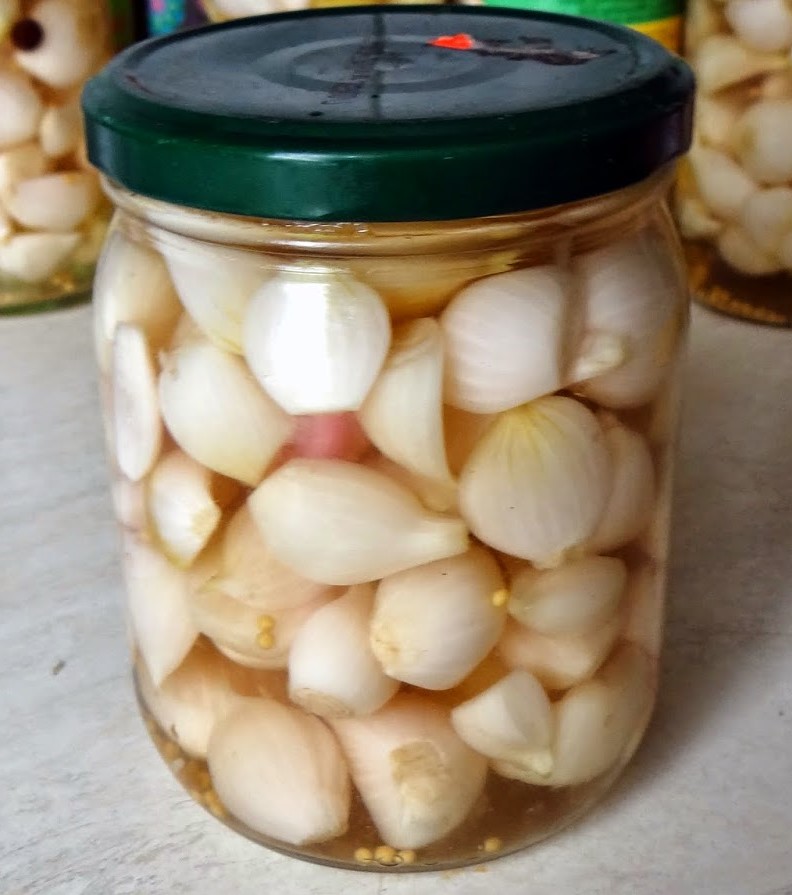

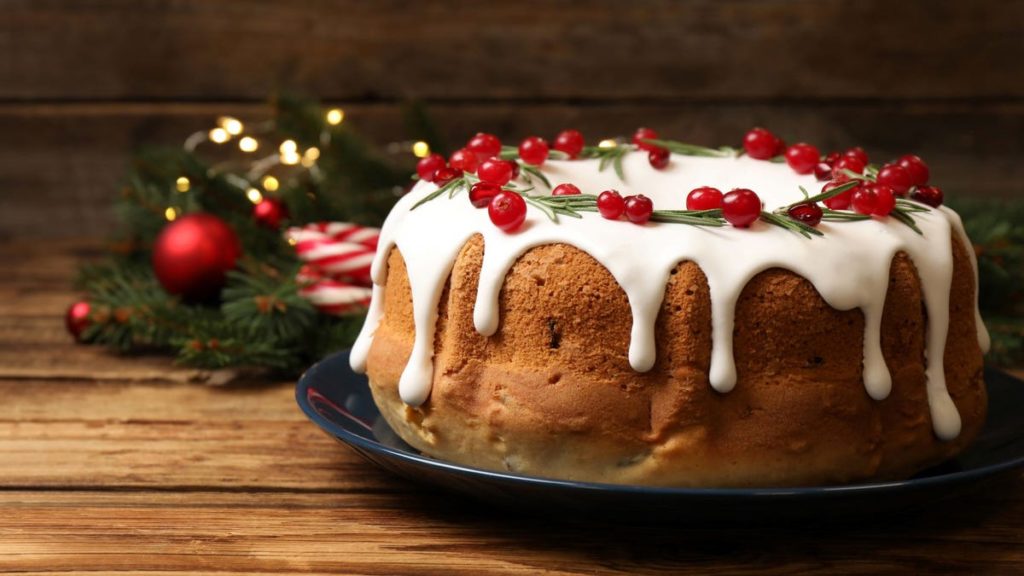

I had no idea you could pickle so many things! Thank you so much for the info.
Wow! Nice information about pickles! I learnt a lot.